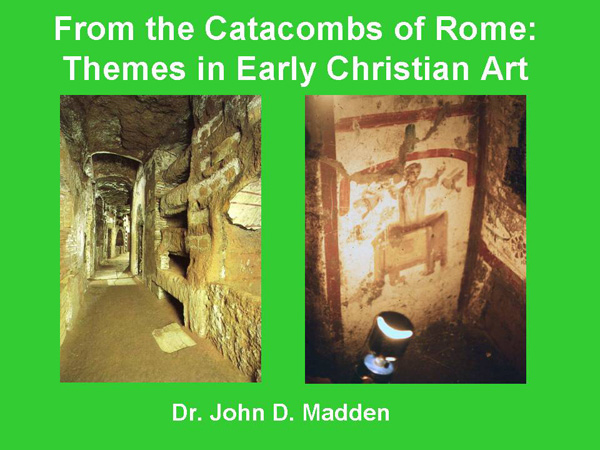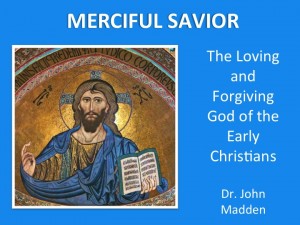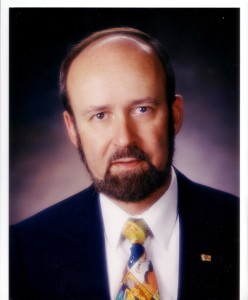Talks by Dr. John Madden
Click on images to enlarge.
Current Topics:
Lent, Good Friday, Easter
The Death and Resurrection of Jesus in Art and History
How did the earliest Christians visualize the death and resurrection of Jesus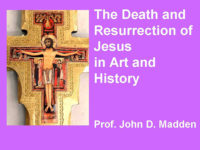 ? The cross does not appear in visual art until the 5th century and the empty tomb until the Italian Renaissance, but earlier Christian imagination was much more profound and dramatic.
? The cross does not appear in visual art until the 5th century and the empty tomb until the Italian Renaissance, but earlier Christian imagination was much more profound and dramatic.
Talks on Early Christianity
Faith and Scripture in the Early Church
Seeing Jesus: How Early Christians Envisioned Their Savior
Themes of forgiveness, mercy, healing, redemption and deliverance from enemies as depicted in frescoes and sarcophagi from the Roman catacombs of the 4th c. A.D.
The Hair-Raising, Death-Defying Life of St. Paul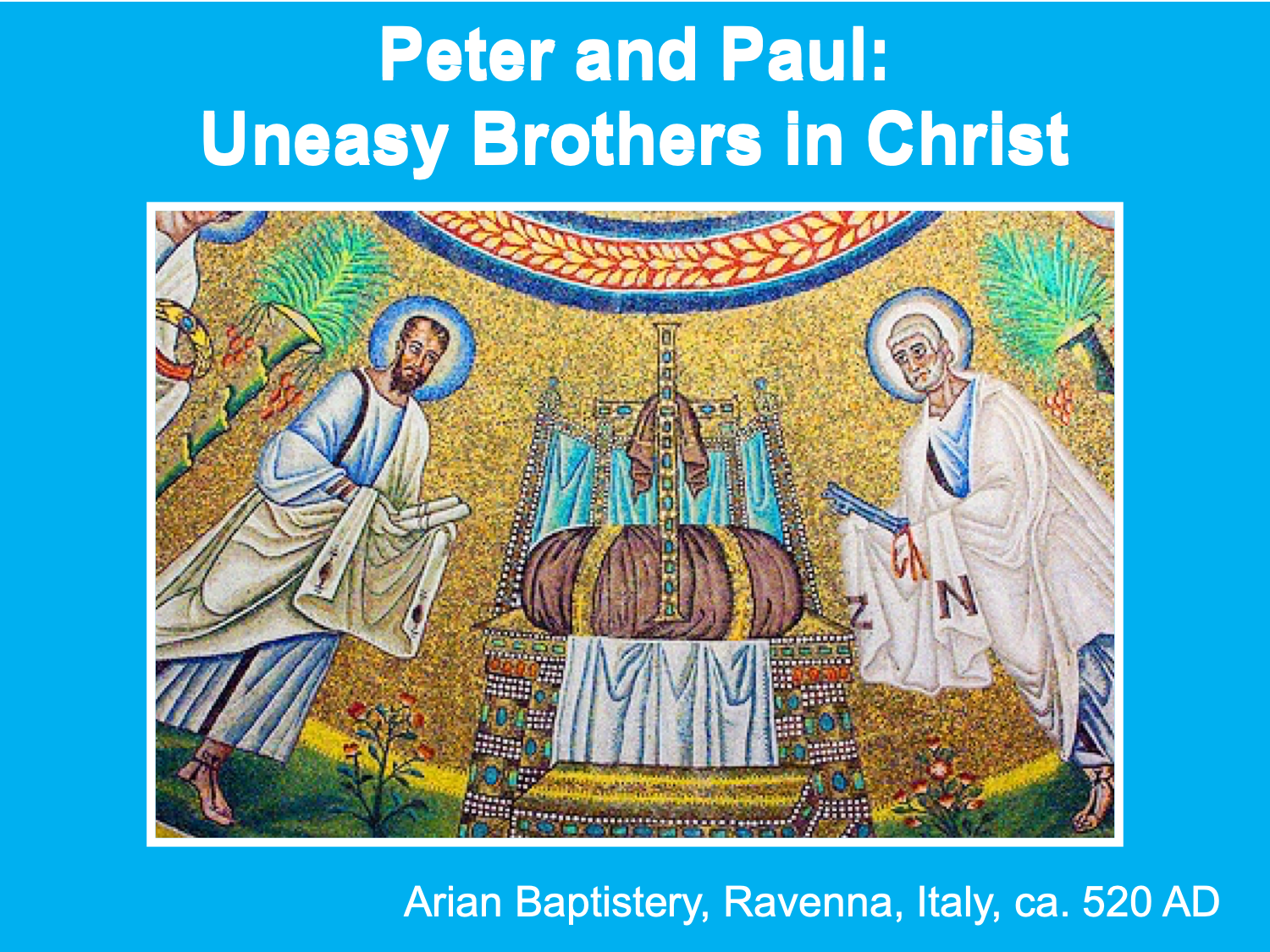
An overview of the life of Paul, based on the gripping accounts in the Acts of the Apostles. The focus is the stories of his many evangelizing journeys–he was the first to preach the Gospel in Europe– on major sites of his apostolic work and his techniques for evangelizing. Illustrations of archaeological sites associated with his life and ministry.
Peter and Paul: Uneasy Brothers in Christ
Beginning with a survey of the life of Peter, which is less well known than that of Paul, we then explore the development of Paul’s theology and how it led to a sometimes confrontational with Peter. We conclude by examining how this creative tension contributed to shaping the mainstream of Christian belief.
The Tombs of the Apostles in Rome
An archaeologist’s visit to the burial places of St. Peter and St. Paul, including photographic tours of the Basilicas of St. Peter in the Vatican and St. Paul’s Outside the Walls. A history of the religious buildings on the Vatican Hill, including old and new St. Peters, with detailed exploration of the modern excavations beneath the church, examining the evidence for Peter’s tomb there, and a look at his actual bones.
The Gospel of Judas and Gnosticism
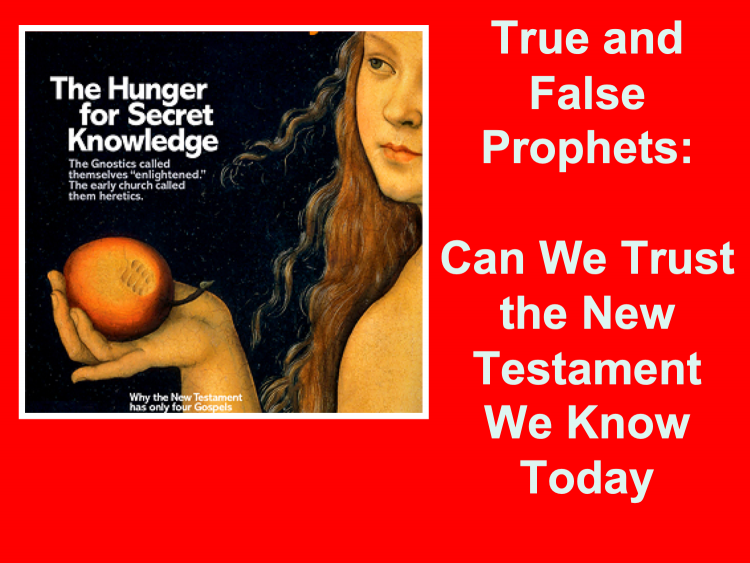 Does the recently discovered “Gospel of Judas” have anything to teach modern Christians? Explore the text and see it in the context of the Gnostic movement of the first five centuries—a movement whose sinister influence is beginning to reappear in the modern world.
Does the recently discovered “Gospel of Judas” have anything to teach modern Christians? Explore the text and see it in the context of the Gnostic movement of the first five centuries—a movement whose sinister influence is beginning to reappear in the modern world.
False Prophets and True Gospels: The Formation of the New Testament Canon
Where did the gospel writers get their picture of Jesus? How reliable was it? How did the books we today call the New Testament become collected? What do modern scholars think of this? An examination of critical theories and a defense of the authentic traditions of the New Testament. (This presentation relies more on oral presentation than on illustrations from art and archaeology.)
Sacraments, Liturgy and Sacred Space
Why Christian Churches Look the Way They Do
Richly illustrated history of the close relationship between the Israelites’ tabernacle in the desert, the Temple of Solomon and Christian Church architecture and layout from the earliest times (4th century) to the present.
Merciful Savior: The Loving and Forgiving God of the Early Christians
The fresco paintings, funeral inscriptions and sculpted sarcophagi of the Catacombs of Rome from the third century onward show no scenes of punishment after death but rather, again and again, show themes of forgiveness, protection, deliverance and passage through death to the banquet of eternal life.
The Churches of the Christian West
The look of Christian churches in the Western world, whether C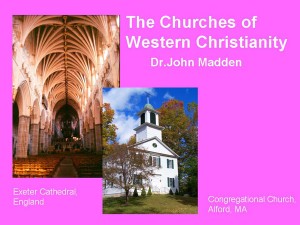 atholic or Protestant, has been familiar for over 1500 years. This presentation traces the influences that led them to this traditional form, influenced by the Temple in Jerusalem, the Roman civic basilica and the mystical visions of St. John in the Apocalypse.
atholic or Protestant, has been familiar for over 1500 years. This presentation traces the influences that led them to this traditional form, influenced by the Temple in Jerusalem, the Roman civic basilica and the mystical visions of St. John in the Apocalypse.
The Churches of the Christian East
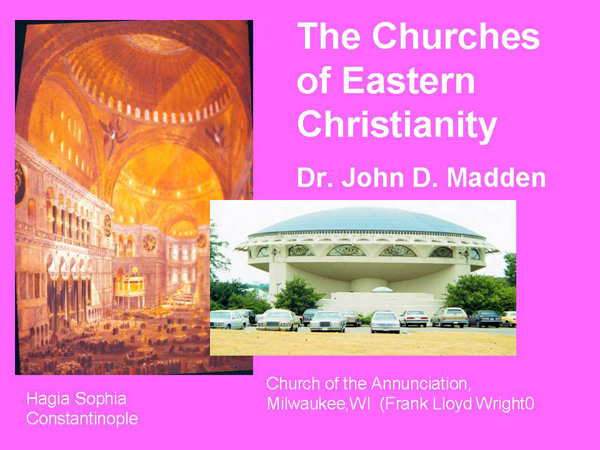 The architecture of Christian Churches in the Greek-speaking East developed in ways very different from those in the Latin West. An exploration and explanation of why they look the way they do, with special focus on Hagia Sophia in Constantinople and modern Greek/Ukranian churches in the United States.
The architecture of Christian Churches in the Greek-speaking East developed in ways very different from those in the Latin West. An exploration and explanation of why they look the way they do, with special focus on Hagia Sophia in Constantinople and modern Greek/Ukranian churches in the United States.
Foretastes of Ete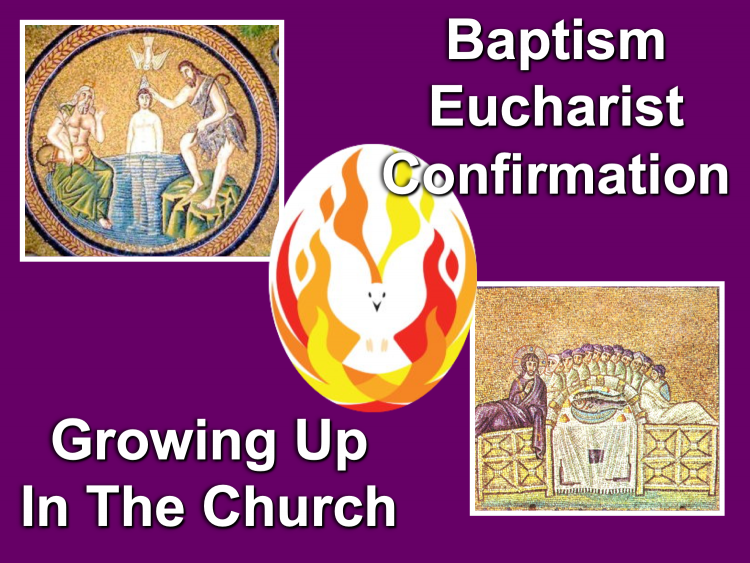 rnal Life: Baptism, Eucharist and Confirmation in Early Christian Art and Life
rnal Life: Baptism, Eucharist and Confirmation in Early Christian Art and Life
Early Christian art, liturgy and funeral practices, from the Catacombs up through early Byzantine mosaics, reveal a different attitude toward the boundaries between this life and the next, graphically illustrating the Christian belief in the communion of the saints.
The Birth of Jesus in Art and History
A virtual tour of the Church of the Nativity in Bethlehem, together with an illustrated exploration of the origins of the feast, the earliest representations of the Nativity, and the sources of the traditional elements of the Christmas Story.
The Death and Resurrection of Jesus in Art and History
How did the earliest Christians visualize the death and resurrection of Jesus ? The cross does not appear in visual art until the 5th century and the empty tomb until the Italian Renaissance, but earlier Christian imagination was much more profound and dramatic.
? The cross does not appear in visual art until the 5th century and the empty tomb until the Italian Renaissance, but earlier Christian imagination was much more profound and dramatic.
The Art and Spirituality of Eastern Christianity
Christians in Greek-speaking lands developed a religious art that is both older and richer than the great heritage of Western Christianity. In the Eastern churches, art is more an encounter with the Kingdom of Heaven than a decoration or a simple visualization of biblical texts. Explore this rich spirituality through the brilliance of the earliest Christian mosaics and frescoes.
Miscellaneous Topics
“The Devil You Know…”—How Early Christians Saw Satan

Why do we imagine the devil the way we do, since he is never described in the Bible? An exploration of the origins of the devil’s imagery in ancient Greco-Roman art.
